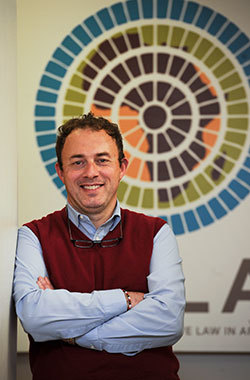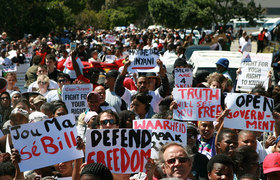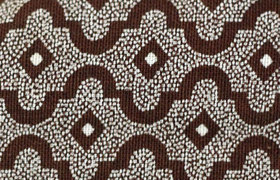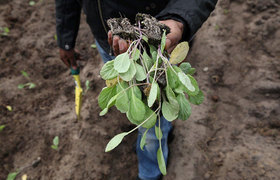Finding common ground in comparative law
25 March 2015
It was a chance sighting while in Kenya some years back that set Professor Salvatore Mancuso on his path – and later took him to the helm of the law faculty's young Centre for Comparative Law in Africa.
On honeymoon in Kenya, Mancuso spotted a company of Italian road workers on the 441km stretch between Mombasa and Nairobi, and wondered idly how the company had managed the legal contract. The handbook he bought at the airport was his first introduction to Kenyan law.
This ignited an interest in all things African, especially the law.
The former corporate lawyer now heads up one of the faculty's most influential research centres (in the Department of Commercial Law), which recognises the centrality of comparative law to economic and legal integration in Africa; the British, French, Portuguese, German and Italian colonial histories having created a mélange of inherited, pluralistic legal frameworks that govern life on the continent. Francophone and Lusophone countries belong to a civil law tradition. In the Southern African Development Community, for example, Botswana belongs to a pure common-law tradition. Just off the south-east coast, Mauritius' legal system has a French-speaking heritage.
"The only way to create a viable legal framework for all countries would be to create a comparative analysis that identifies commonalities," says Mancuso. "If you impose a hegemonic system, you run the risk of rejection."
The centre does just this, explains Mancuso – identifying common ground and infusing the faculty's courses and teaching with comparative African perspectives. The team has worked hard to build networks and links throughout the continent, while developing its own academic offerings.
Story by Helen Swingler. Photo by Michael Hammond.
 This work is licensed under a Creative Commons Attribution-NoDerivatives 4.0 International License.
This work is licensed under a Creative Commons Attribution-NoDerivatives 4.0 International License.
Please view the republishing articles page for more information.










